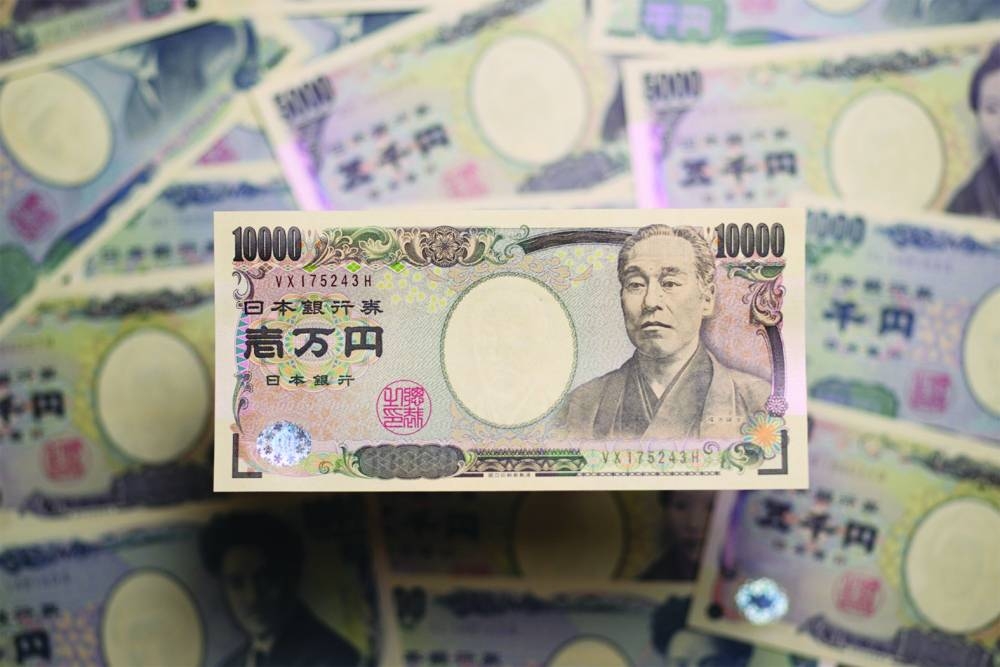Japan’s plan to double household income from investing is shaping up as a catalyst for even longer-term weakness in the yen — already this year’s worst-performing major currency.
Retail investors who’ve been pouring savings into overseas stocks and funds are expected to accelerate their purchases in 2024 — driving selling of the yen in the process — when the government permanently removes taxes on dividends and trading profits on a highly popular form of investment account for individuals.
While the Nippon Individual Savings Account, or NISA, allows Japanese to invest domestically or abroad, low yields at home and the yen’s down trend has made foreign-currency investments increasingly attractive.
The value of foreign shares and investment-trust funds in NISA accounts has risen at an average annual pace of more than 30% since 2015, based on a Bloomberg analysis of public data.
The total amount as of the end of March stood at the equivalent of $50bn, only enough for marginal impact on the currency. But given the trajectory of NISA accounts, the tax incentives on the way, and a pool of household savings worth ¥1,107tn ($7.5tn) to draw on, the impact is set to increase.
“The NISA expansion will surely boost portfolio outflows and investors making regular contributions into foreign assets may result in continuous yen selling,” said Tsuyoshi Ueno, a senior economist at NLI Research Institute in Tokyo. “Low growth expectations and low yields locally mean money is more likely to flow out of Japan.”
The NISA system was modelled on the UK’s Individual Savings Account and designed to encourage Japanese individuals to make investments for their retirement rather than holding cash or savings accounts with near-zero interest rates. The most used type of account now allows holders to invest as much as ¥1.2mn annually, with a five-year period during which trading profits and dividends aren’t taxed.
With Prime Minister Fumio Kishida aiming to double household income from investment earnings, changes to NISA in 2024 will triple the yearly investment limit to ¥3.6mn and remove the taxes indefinitely.
Japanese investment trusts have preferred foreign equities over local ones in recent years, which reflects a falling home bias among domestic investors, Shusuke Yamada, a foreign-exchange and rates strategist at Bank of America, wrote in a research note this month.
The yen has slumped 11% so far this year against the dollar, driven by a divergence in interest rates between Japan and the US that is unlikely to narrow significantly any time soon, even if the Bank of Japan edges toward normalisation of its monetary policy.
“The new NISA system is expected to change the investment scene drastically, especially helping to establish a custom of making regular contributions,” said Takayuki Yagi, the deputy general manager of the NISA marketing office at Mitsubishi UFJ Kokusai Asset Management Co in Tokyo.
“If many people expect the yen to gradually depreciate in the medium to long term, it may encourage some of them to bet on the appreciation of foreign currencies and overseas investment.”
Note on methodology of Bloomberg calculations: The Financial Services Agency reports the usage of NISA accounts every quarter without providing a breakdown of local and foreign assets. The share of foreign assets in investment funds was estimated using data from the Investment Trusts Association, while the Bank of Japan’s flow-of-funds data were used to estimate a share of foreign equities.

Japan’s plan to double household income from investing is shaping up as a catalyst for even longer-term weakness in the yen — already this year’s worst-performing major currency
